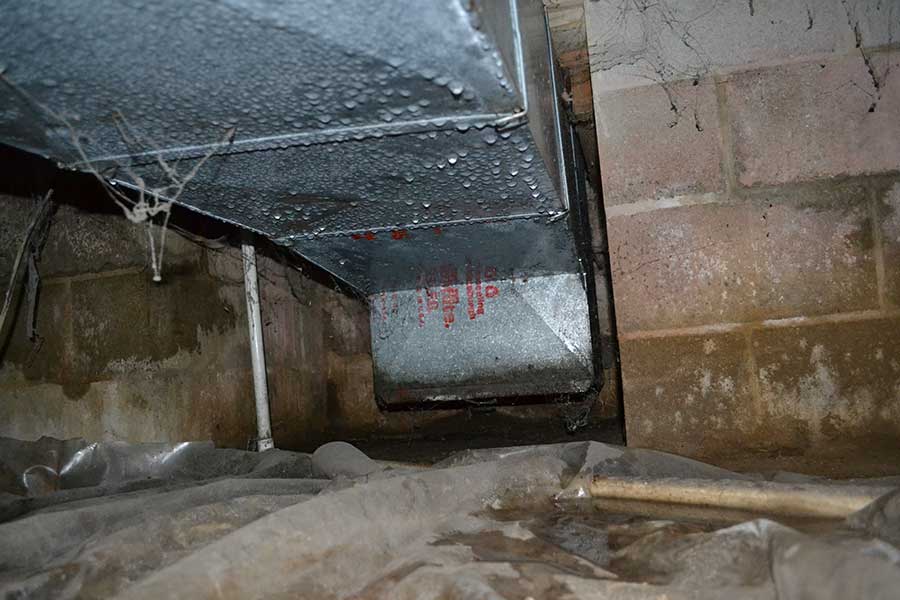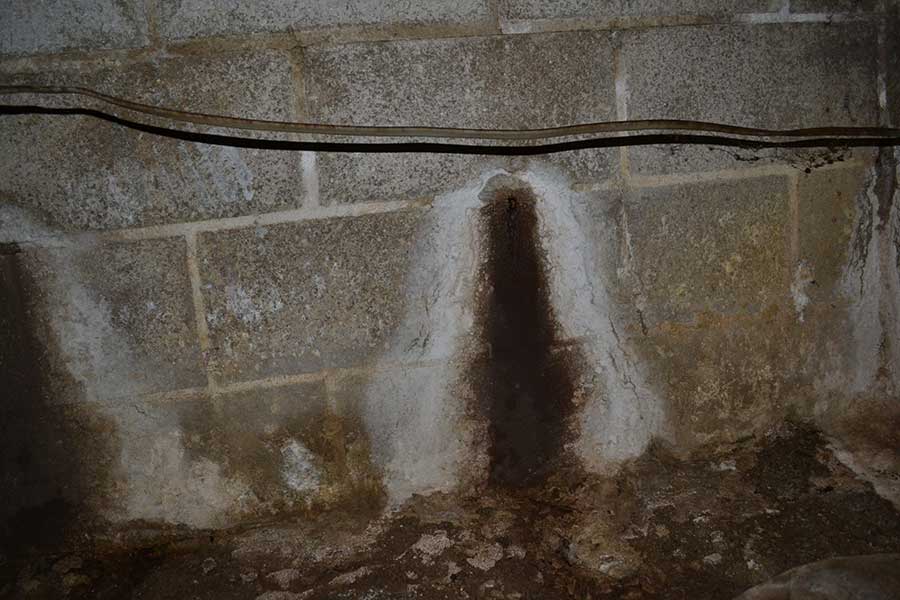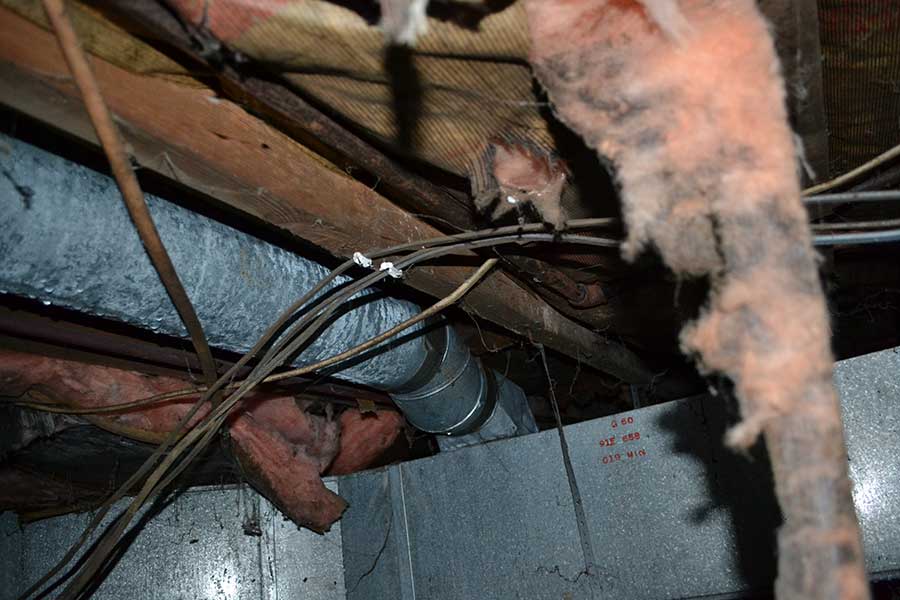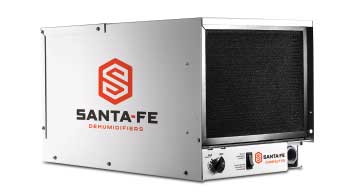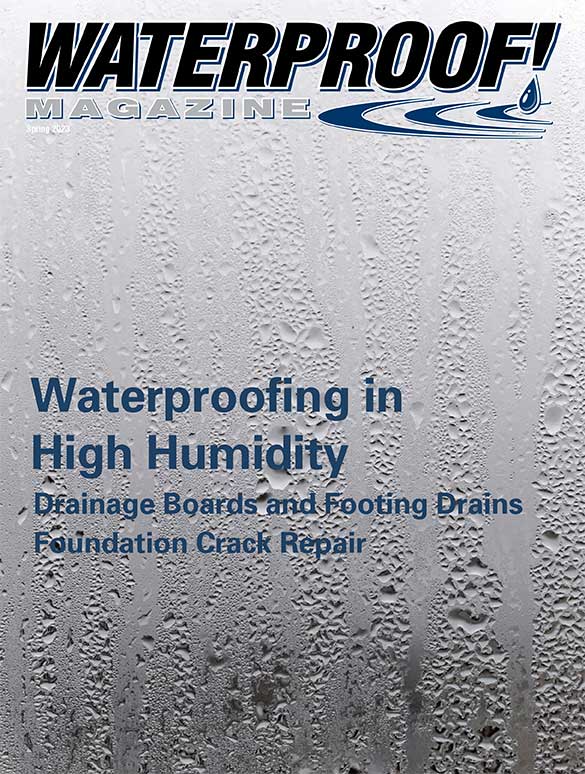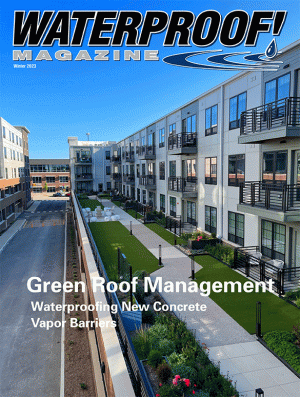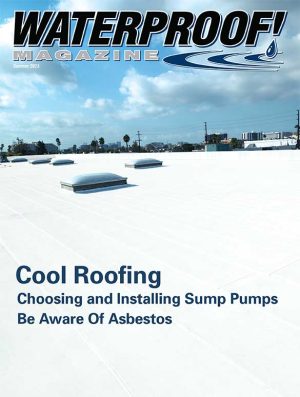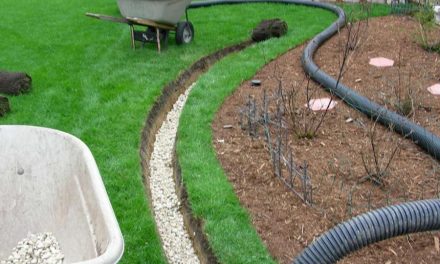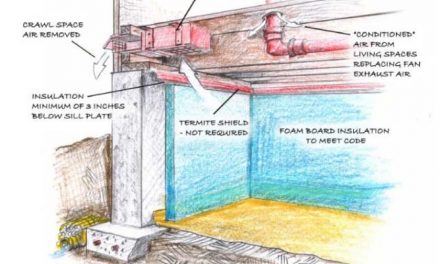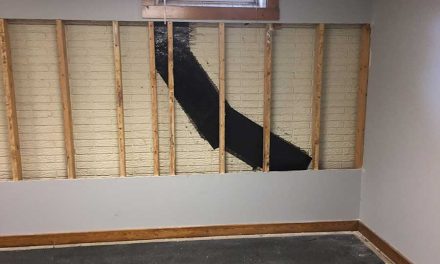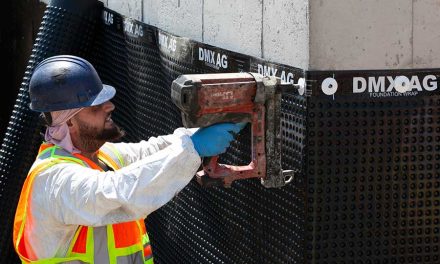By Vanessa Salvia
Crawlspace with poor vapor barrier installation and no waterproofing on exterior walls. As a result, condensation is forming on the ductwork, water is seeping through the foundation wall, and the insulation is degraded.
There are some areas of the country where it is humid at a much higher rate than other parts of the country, like the deep South and the Northeast, along with states and territories like Hawaii and Puerto Rico. Does the fact that there is more humidity in the air change the way that you approach waterproofing? High humidity does affect some things, and here’s what you have to keep in mind.
Applying Waterproofing Material
Matt Veazey, president of Rubber Polymer Corp., explains that if there’s high humidity, it will take longer for the water to evaporate out of your water-based waterproofing product. “It is going to take a lot longer for it to cure out,” he says. “There’s more water in the air already, so the water is not going to come out of the product as fast.”
Veazey says waterproofers don’t really need to do anything different in a high humidity environment other than pay attention to the weather. “We tell them to watch the forecast, because you don’t want your spray to be uncured and have it rain. It could affect uncured material in an adverse way,” he says. “If you know it’s going to rain within 24 hours, it’s probably best to just hold off on spraying so you can be sure to have a little more drying time.”
Epro Services, a waterproofing company in Wichita, Kansas, manufacturers a spray called e.spray, which is a polymer modified asphalt (PMA) applied to nominal dry thicknesses of 60, 80, and 100 mils depending on the E.Series system configuration. E.spray bonds to a variety of materials including HDPE, polyolefin sheets, geotextile fabric, wood, metal, foam insulation, and concrete-based surfaces. E.spray is a water-based, anionic asphalt emulsion modified with a blend of synthetic polymerized rubbers and proprietary additives that becomes highly reactive when sprayed to form a rapidly cured and highly bonded membrane. Peter Grant, Epro’s vice president of marketing, says e.spray can be applied to slightly dampy substrates free of ponding water and is a product they frequently use in their waterproofing work in areas, like the South, where it is frequently humid. “E.spray is sprayed directly on the concrete foundation, and then we apply a protective course over that along with a drain mat,” Grant says.
Humidity In Crawl Spaces
Controlling the humidity inside a crawl space is key to having healthy indoor air quality. Ryan McCoy is the marketing manager for ISI Building Products, a manufacturer of vapor barrier, insulation, and building wrap brands in Illinois. McCoy says vapor barrier encapsulations of crawl spaces are becoming more common in areas where it is very humid. “Part of the reason for that is high humidity environments are more prone to mold growth and related problems in crawl spaces,” McCoy says. “In humid areas like the Southeast, you often find air conditioning ductwork running through the crawl space. When the ductwork is cold, and you’ve got a high humidity environment, that humid air will condense on cold surfaces and can lead to mold, mildew, insect infestation and material degradation. A whole host of things that you really don’t want to have inside or near the building.”
It might be easy to assume that in areas where there is high humidity, it may also rain a lot, which could in turn translate into higher amounts of water in the soil. But that’s not necessarily true. And if it does rain a lot, that turns into a hydrostatic pressure issue rather than a humidity-specific issue.
High Humidity and the Home
“Humidity is a significant driver of human comfort,” explains McCoy. “If a person is sitting inside the house at 70% relative humidity in the summertime, they’re going to feel warmer than somebody at that same temperature with 40% relative humidity. So being able to waterproof and encapsulate the crawl space helps control the level of humidity inside the house which ultimately leads to increased comfort.”
Water leaks in and around a home contribute to extra moisture in the home. Water can enter a structure in many ways such as through the foundation or from plumbing issues. If you live in a high-humidity environment, homes without adequate waterproofing can become hosts for mold and mildew, and can cause health problems like stuffy noses, coughs, breathing difficulties, sore throat, etc. High humidity environments mean that the foundation, floors, windows, ceilings, attics, and crawl spaces are exposed to more moisture, which can cause problems over time.
Investing in a Dehumidifier
Sources of water damage in a basement don’t have to be from a broken pipe, flood, or crack in the foundation wall. Water damage can come from one sneaky source: humidity. Humidity can cause problems like mold and mildew growth. Condensation can cause rust damage on any metal. If the basement is finished, the homeowners may notice discoloration or peeling on paint or wallpaper, or warping on flooring or paneling. A dehumidifier removes excess moisture from the air. Most homeowners will want to go the extra mile and get a more advanced unit that can run on their own affixed to a drain, rather than having to empty out a tank.
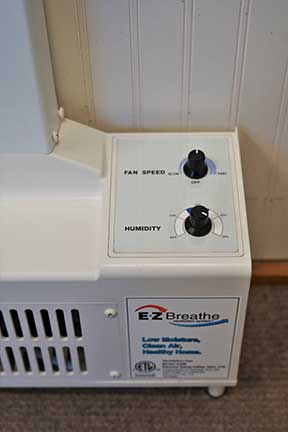
The EZ Breathe Ventilation System draws air from the home’s lowest level and exhausts it to the outside, making room for cleaner air.
A dehumidifier removes excess moisture from the air. There are many types of dehumidifiers. Most homeowners do not want to have to empty their dehumidifier tank every two days. What about vacations? A homeowner who buys a dehumidifier off the shelf from a hardware store can be easily misled about how much square footage the dehumidifier actually can handle. Most of the time, the actual performance is much lower than what is stated on the box. And in order to avoid having to manually empty the tank, the unit must be attached by a hose or some sort of pipe to a drain or to the outside — well away from the foundation. The best dehumidifiers run on their own, have a monitoring system that you can check in with from afar, and respond automatically to the current moisture in the air by turning on when needed and turning off when not needed.
The EZ Breathe Ventilation System is a whole-house, maintenance-free solution for dehumidification and improved indoor air quality. “Just removing the liquid water intrusion into the foundation is only half the job,” says Erika Lacroix, president of EZ Breathe in Ohio. “Addressing airborne moisture is the other half, because airborne moisture will condense.” Lacroix points out that the air in your basement doesn’t stay in your basement, but instead is drawn up into the living environment. “Forty percent of the air that you breathe in your home was once basement air, so it’s critical that the humid air is addressed,” she says. “We believe mechanical ventilation and dehumidification should be part of every waterproofing job, but especially those that are in high humid areas to begin with.”
Unfortunately, Lacroix says, most people building new homes don’t take the extra steps to properly seal a foundation or a crawl space — after all, repairs caused by problems in this area is one of the main things keeping waterproofers in business. Luckily, dehumidifiers are an easy post-construction fix. “Ensuring that you have conditioned air being delivered into your home is huge for indoor air quality, which impacts health, and that can be done by using mechanical ventilation such as with an EZ Breathe,” she says. “If you aren’t able to get conditioned air down into those lower spaces in the home, ventilating the foundation will allow you to condition that lower finished area without cutting holes in or upgrading your HVAC. By simply creating some ventilation, you’ll introduce good quality conditioned air into that space.”
Nikki Kreuger is director of marketing and business development for Santa Fe Dehumidifiers in Wisconsin. “Adding a dehumidifier should be the last step in the waterproofing process in order to ensure that the RH is always controlled to below 60%,” Krueger says.
As McCoy says, when you’re waterproofing to deal with humidity, you can approach it in one of two ways: “You can either do a good job of waterproofing and rely less on mechanical dehumidification, or do a poor job of waterproofing and need more equipment to remove humidity from the inside.”
Spring 2023 Back Issue
Price range: $4.95 through $5.95
Crack Repair For Foundations
Waterproofing in High Humidity
Drainage Boards and Footing Drains
Residential Basement Waterproofing
Case Study 1: The Hyatt House Miami
Case Study 2: Bowed Block Wall Repair
Case Study 3: Miami’s Brickell View Terrace Apartments
Description
Description
Crack Repair For Foundations
By Vanessa Salvia
Different repair methods are used based on whether
the cracks affect the structural integrity or not.
Waterproofing in High Humidity
By Vanessa Salvia
High humidity does affect some aspects of waterproofing, and here’s what you have to keep in mind.
Drainage Boards and Footing Drains
By Vanessa Salvia
Water seepage into a building’s foundation is one of the biggest threats to structural integrity.
Residential Basement Waterproofing
By Holly Richards-Purpura
Addressing a nasty crawl space and a damp, leaking basement before selling a home.
Case Study 1: The Hyatt House Miami
The Hyatt House Miami Airport Hotel in South Miami, Florida, required more than 30,000 square feet of Polystick XFR roof underlayment.
Case Study 2: Bowed Block Wall Repair
A contractor from EcoSpect used Rhino Carbon Fiber’s Bowed Wall Repair Kits to reinforce a CMU basement wall.
Case Study 3:
Miami’s Brickell View Terrace Apartments
M3 Roofing complete a 6,000-square-foot re-roof project using a self-adhered, multi-ply roofing system from Polyglass.
Additional Info
Additional information
| Weight | N/A |
|---|---|
| Magazine Format | Digital Download Magazine, Print Mailed Magazine |

